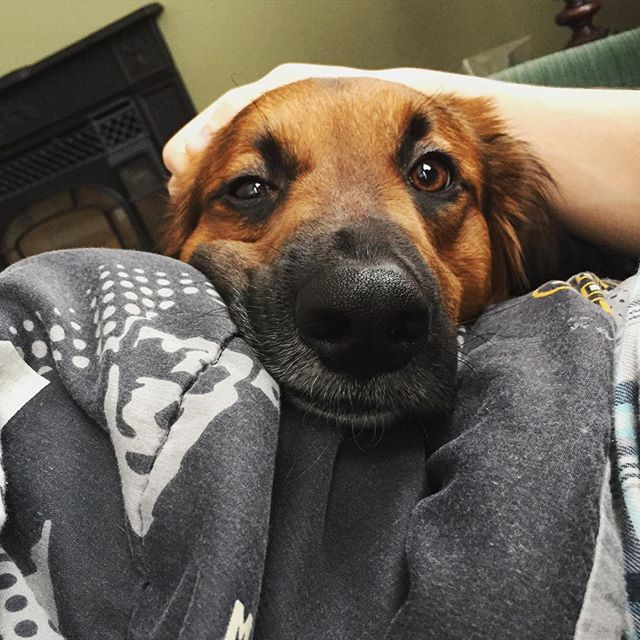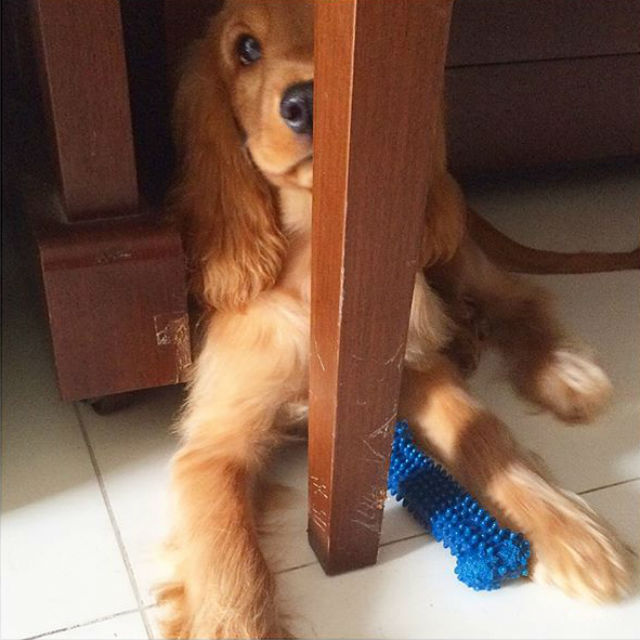After a long day at work, it’s SO nice to come home to a furry friend who’s ready to greet you as soon as you walk through the door. But if you yearn for urban living, you may wonder how people manage to work and handle a dog (or two!) into their teeny city apartments.
Truthfully, it’s much easier than you think. As long as you take the right steps, city living and dogs are really a match made in heaven.
Step 1: The Basics
Your mom always said that having a dog is a huge responsibility. And guess what? She’s right. If you work from home, having a dog is no big deal, and their company is more than welcome. It’s when you work that 9-5 job that issues start to arise.
[bp_related_article]
If you have, say, 8-10 hour days before you come home for the night, a dog requires a few extra concessions… like coming straight home and having a dog walker stop by during the day. If your workload demands more like 12-14 hours, you may want to skip the dog until you have the time to really give him or her the love she deserves.
Once you know your personal and work schedule can handle a pup, it’s time to evaluate your living situation. Many rentals and even co-ops and condos don’t allow dogs. Not even tiny ones. *Sigh* The last thing you want is to get kicked out or end up having to give up your four-legged friend. Check the rules and talk to your landlord or board to verify that you live in a dog-friendly building.
Step 2: Dog Breed
Believe it or not, size matters less than activity and bark level. That’s why having a Great Dane in a studio apartment may seem odd, but it’s really a smart choice given that they’re a touch lazy but oh-so lovable. High-energy dogs just don’t work in the city unless you have a ton of space for them to run around and are willing to walk and exercise them a couple of hours a day.
Choose a less active breed like Spaniels, Bulldogs, Bichon Frises or Lhasa Apsos. St. Bernards, Chow Chows and Great Danes are also good choices. You might be surprised that the bigger they are, the better suited a dog can be for urban life. Many toy dogs are actually quite active, so unless you have enough space at home, they may not be the best choice.
Speaking of toy dogs, many of these breeds can be, well, a bit noisy. If you live in a building with paper-thin walls, you won’t be the only person that hears your dog yowling incessantly.
Of course, there are exceptions with proper training and adequate exercise (which you should be doing with your dog anyway!), and you can work to alleviate some of these issues with any dog. Be sure to do your research before selecting which pooch to welcome into the family—and the apartment building. Some dogs are known to shed significantly more than others, and hairballs—in addition to the ever-accumulating dust in city apartments—can be a hassle to clean.
Step 3: House Rules
Fido should be just as comfortable in your home as you are. This doesn’t mean they get the run of the place, just that it should be a happy, balanced environment. Part of creating this atmosphere is setting up rules and guidelines for your dog to follow. Yup, this is pretty much the point where you decide if you’ll let them lounge on the sofa and claim a pillow on your bed, or if they’ll have to stick to their own spot on the floor.
Allowing your dog on the furniture is a personal preference, but if you decide to go that route there are things you should keep in mind. Like the fact that muddy paws and white sofas just don’t mix. Pick pet-friendly furniture that’s easy to clean, whether it’s microfiber or something with a removable slipcover you can throw in the wash. As long as your pieces are easy to clean and maintain, letting your dog lounge in luxury won’t be a big deal.
Step 4: Furniture Upkeep
Puppies chew on everything, including furniture legs. Exercise them and give them plenty of toys, and teach them from a young age that teeth marks do not belong on your chairs.
When it comes to upholstery, there’s bound to be fur everywhere you look. Even if your dog isn’t a shedder, you’ll still have to deal with a little bit of it. Many dog owners suggest making the sacrifice and purchasing a sofa in a color that blends with your dog’s fur (just imagine a black Pug all over your mother-in-law’s beige sofa).
Invest in a good vacuum (like the Dyson Animal) that will allow you to clean fur and hair from furniture crevices. For more—ahem—severe stains, follow the material guidelines to keep fabric in excellent condition.
Planning on reselling your furniture? Give any upholstered piece a really good cleaning. Steam cleaners are an inexpensive rental at your local supermarket; they’ll not only remove all pet slobber, but they’re bound to make your item look as good as new. When selling, ALWAYS be upfront about whether you have pets. You may love your little four-legged friend, but the next person might have severe allergies. Be honest to prevent health issues and to keep your good karma.
Small spaces are a part of big city living, but that shouldn’t affect your decision to adopt a dog. As long as you’re mindful of your pooch and your living space, sharing a home with a pup in the city can be one pawesome experience.
This post is contributed from our friends at AptDeco! AptDeco is an online marketplace for quality pre-owned furniture. With a verified community of buyers and sellers, pre-arranged pick-up and delivery, and a secure payment process, AptDeco is a simple and reliable way to buy and sell furniture without the hassle.
















